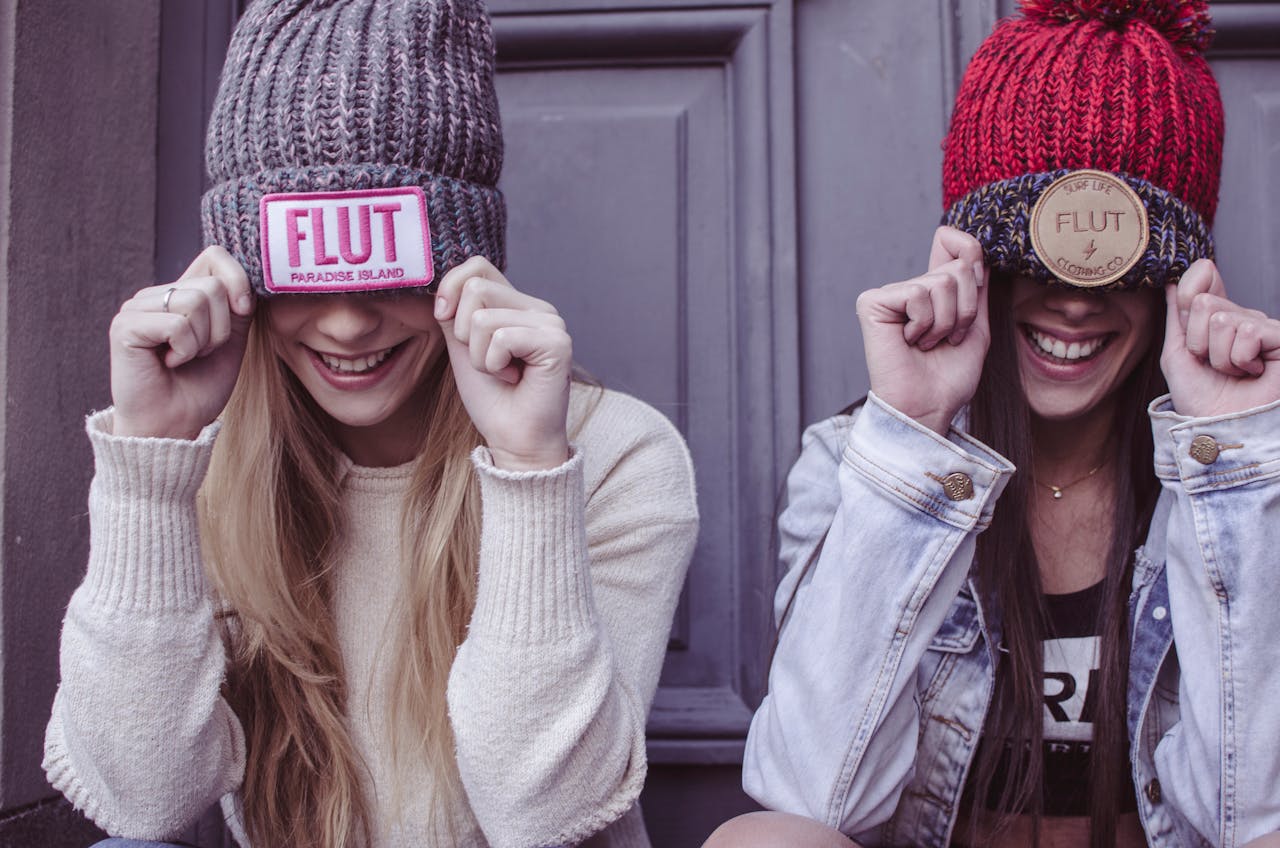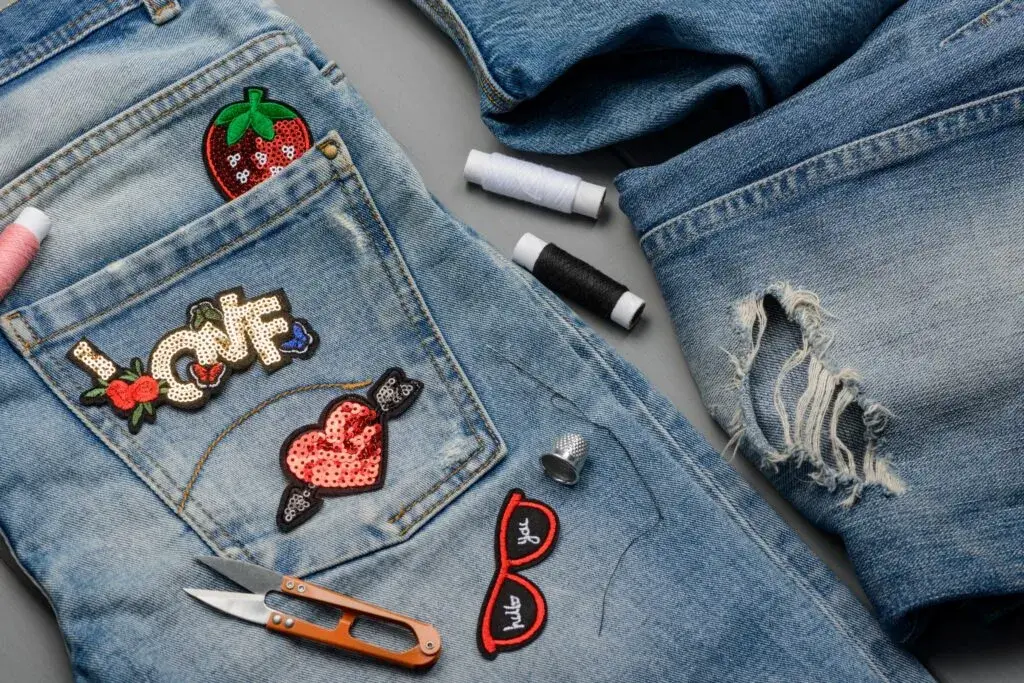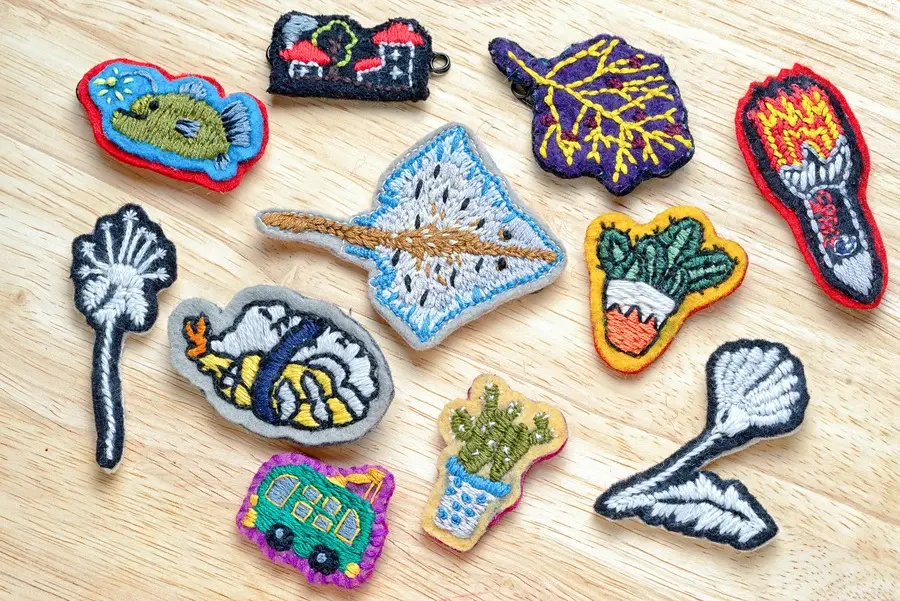Different Types of Materials for Your Enamel Pins
Designing enamel pins is more than just a creative endeavor; it’s an opportunity to showcase your ideas in a tangible, stylish form. Every choice you make—from the type of enamel to the metal finish—plays a critical role in the overall quality, durability, and visual appeal of your pins. At THE/STUDIO, we’ve simplified this process, offering affordable and customizable options that make it easier than ever to bring your unique vision to life. Here’s an in-depth look at the materials you’ll need to consider when creating your custom enamel pins.
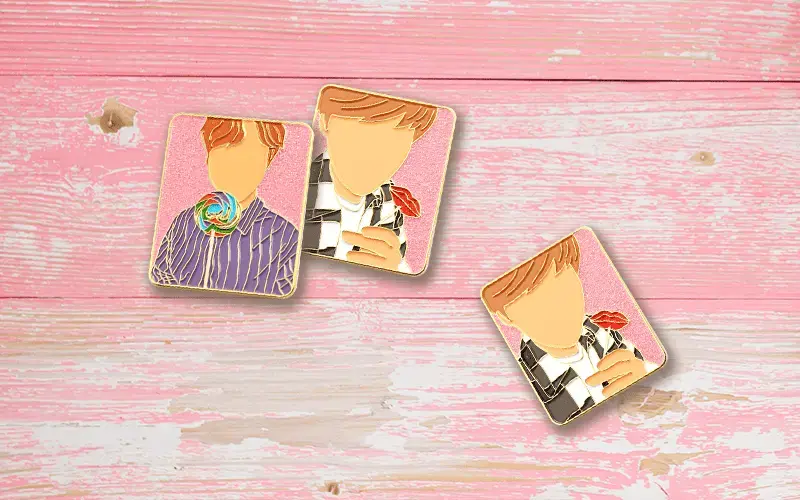
Enamel Options for Your Pins
Enamel paint is a core component of enamel pins, offering a vibrant, glossy finish that is both eye-catching and highly durable. This material plays a crucial role in enhancing the aesthetic appeal of pins while ensuring their longevity. The colors achieved with enamel paint are rich and bold, making it an ideal choice for creating standout designs that grab attention.
When selecting the type of enamel for your pins, you have two main options: soft enamel and hard enamel. Each type has unique characteristics that cater to different styles and purposes. Soft enamel is known for its textured, layered look, where the recessed areas create a dynamic contrast with the raised metal outlines. This type of enamel is ideal for intricate designs that require fine detailing and depth. It also tends to be more cost-effective, making it a popular choice for larger orders or projects with budget constraints.
On the other hand, hard enamel pins. provides a smooth, polished finish that feels luxurious and professional. Its production process involves additional steps, such as grinding and polishing, resulting in a flat surface that enhances the overall quality and durability of the pin. Hard enamel is perfect for designs with bold color blocks and minimal detailing, as it emphasizes clean lines and a sleek aesthetic. While slightly more expensive, it is often chosen for projects that prioritize premium quality and a timeless appearance.
By understanding the features of both soft and hard enamel, you can select the option that best aligns with your design goals, budget, and intended audience.
Soft Enamel Pins
Soft enamel pins are the most traditional type of enamel pins. They are crafted by pouring liquid enamel paint into the recessed grooves of a die-struck metal base. Once the enamel is baked and hardened, it forms textured valleys that give soft enamel pins a glossy, multi-dimensional appearance.
Benefits of Soft Enamel Pins:
- Detailed Designs - Soft enamel pins are particularly well-suited for intricate artwork and detailed patterns. Their production process allows liquid enamel to settle into recessed areas of a die-struck metal base, enabling the creation of fine lines and complex shapes. This characteristic makes them the perfect choice for designs that require precision and a high level of detail. Whether it’s a logo with intricate text, a detailed illustration, or a pattern with multiple small elements, soft enamel pins ensure that every aspect of your design is captured with clarity and accuracy.
- Affordability - Soft enamel pins are also known for their cost-effectiveness, making them a popular option for larger orders or projects with budget constraints. The production process is relatively straightforward, which helps to keep manufacturing costs lower compared to other types of enamel pins. This affordability makes them an excellent choice for organizations, events, or businesses looking to distribute pins widely without compromising on quality. Whether you’re creating merchandise, promotional items, or giveaways, soft enamel pins offer an economical yet high-quality solution.
- Vibrant Finish - One of the standout features of soft enamel pins is their vibrant finish. The enamel paint, once baked and hardened, retains rich and vivid colors that beautifully contrast against the raised metallic outlines. This dynamic interplay between the recessed colored areas and the shiny metal edges creates a striking visual effect that enhances the appeal of your design. The glossy finish of the enamel adds depth and dimension, ensuring that your pins not only look eye-catching but also exude a professional and polished appearance. This makes soft enamel pins a versatile choice for a wide range of applications, from branding to personal expression.
Despite their name, soft enamel pins are not “soft” to the touch. Once baked, they are hard and durable, though slightly less so than hard enamel pins. They’re a versatile option suitable for a wide range of applications, from promotional merchandise to personal collectibles.
Hard Enamel Pins
Hard enamel pins are known for their smooth, polished finish and superior durability. During production, each area of the pin is filled with colored enamel, then baked and polished repeatedly until the enamel is flush with the metal base. This meticulous process results in a sleek, flat surface.
Benefits of Hard Enamel Pins:
- Durability - Hard enamel pins are renowned for their exceptional durability, making them ideal for long-term use. The polished surface of these pins is highly resistant to scratches, ensuring that their appearance remains pristine even with regular handling or wear. This durability makes hard enamel pins a reliable choice for customers who want pins that retain their aesthetic appeal over time. Whether used as collectibles, promotional items, or accessories, these pins can withstand the test of time, maintaining their original beauty and functionality.
- Premium Look - One of the standout features of hard enamel pins is their premium look. These pins boast a high-quality, jewelry-like finish that exudes a sense of luxury and sophistication. The polished surface reflects light beautifully, adding an elegant touch to any design. This upscale appearance makes hard enamel pins a popular choice for brands, organizations, and individuals looking to create pins that make a lasting impression. Whether used for corporate branding, special events, or personal collections, hard enamel pins elevate the perceived value of the design they showcase.
- Smooth Finish - Unlike their soft enamel counterparts, hard enamel pins feature a smooth, seamless finish that enhances their modern and streamlined aesthetic. The absence of recessed areas creates a flat and uniform surface, allowing the design to appear polished and refined. This smooth finish is particularly appealing for minimalist or contemporary designs, where clean lines and simplicity are key. Additionally, the sleek texture of hard enamel pins makes them comfortable to wear or display, further adding to their appeal as a versatile and stylish accessory.
While hard enamel pins are more expensive than their soft enamel counterparts, they are worth the investment for designs that prioritize durability and elegance. However, they’re less suited to intricate details due to the polishing process.
Choosing the Right Enamel
The decision between soft and hard enamel depends on your design, budget, and personal preferences. For detailed and cost-effective designs, soft enamel is the way to go. If you’re aiming for a polished, high-end look, hard enamel is a better fit. At THE/STUDIO, we offer over 21 colors for both enamel types, and you can incorporate up to five colors for free. For more vibrant and detailed designs, additional colors are available at an extra cost.
Want something different? You can skip enamel altogether and opt for monochromatic metallic pins like die-struck or 3D mold pins. These pins offer a sleek, minimalist aesthetic that highlights the beauty of the metal itself.
Metal Choices for Custom Pins
The type of metal you choose is one of the most significant decisions in pin design. It serves as the base for your pin and influences its overall aesthetic and durability. At THE/STUDIO, we provide 14 unique metal finishes, giving you the flexibility to create a look that perfectly complements your design.
Shiny Metal Finishes
Shiny metal finishes provide a polished, reflective surface that enhances the overall brightness and vibrancy of your enamel pins. These finishes are perfect for adding a touch of elegance and sophistication to your designs. Here are some popular shiny metal options to consider:
- Shiny Gold: Gold remains a timeless and classic choice, offering an elegant and luxurious appearance. Its warm, radiant shine makes it a favorite for pins intended to convey prestige and high quality.
- Shiny Silver: Silver is another timeless option that is both versatile and visually appealing. Its neutral tone pairs seamlessly with most enamel colors, making it an excellent choice for a wide range of designs.
- Brass and Copper: These warm-toned metals bring a vintage charm to your pins. Brass and copper are excellent choices for designs that aim to evoke a sense of nostalgia or antique elegance. Their distinct hues provide a unique contrast against vibrant enamel colors.
- Shiny Gunmetal: Sleek and sophisticated, these pins boast a polished dark gray gunmetal finish.
- Black Paint: For a bold and modern look, these pins are coated in a full matte black paint.
- Shiny Nickel: These pins have a cool, polished silver-nickel finish.
- Antique Gold: Give your pins a vintage touch with this elegant, distressed gold finish.
- Antique Silver: Add a touch of antiquity with these pins, featuring a distressed silver finish for a vintage feel.
- Shiny Rose Gold: Add a touch of romantic elegance with these beautifully polished rose gold pins.
- Shiny Brass: These pins feature a warm, polished brass finish for a classic and sophisticated look.
- Antique Brass: These pins have a vintage brass finish with a distressed look for an aged, antique appearance.
- Antique Nickel: These pins offer a vintage silver-nickel finish with a distressed look for a timeless, aged effect.
- Shiny Copper: These pins feature a warm, polished copper finish for a classic and eye-catching look.
- Antique Copper: These pins have a vintage copper finish with a distressed look, adding a touch of rustic charm.
- Brushed Brass: These pins have a unique, brushed brass finish for a more rugged and textured look.
Which Type of Metal Is Best for My Pins?
The ideal metal and finish for your pins depend on your design goals, desired aesthetic, and color palette. With enamel pins. often featuring vibrant colors, it’s essential to choose a metal finish that complements your overall design.
All metal and finish options offered are high-quality, ensuring your pins look stunning and durable. The choice ultimately comes down to personal taste and the vibe you want your pins to convey.
Compatibility with Hard and Soft Enamel Pins: Hard enamel pins are polished for a smooth finish, making some metal options, such as antique finishes or black paint coatings, incompatible. If your design involves hard enamel, avoid these finishes. For soft enamel pins, all metal and finish options are available, providing more flexibility for your design.
Affordable Customization Options
Most metal and finish customizations come at no additional charge. However, shiny silver and antique silver finishes may incur an extra fee, so keep this in mind when planning your pin's budget.
Combining Materials in Your Enamel Pins
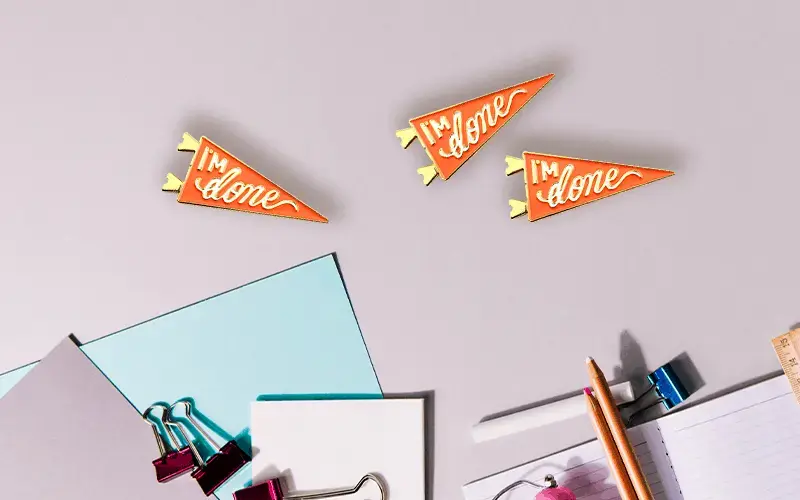
Can’t decide on one finish? You can combine two metal colors of the same finish (e.g., antique silver and antique gold) to create a multi-tonal effect. This is a fantastic option for adding contrast and depth to your design.
Note: Certain finishes, like antique and black paint, are incompatible with hard enamel pins due to the polishing process. If your design includes hard enamel, opt for shiny metals instead.
Enamel Pin Backing Attachments
While the backing attachment may not affect the visual appeal of your pin, it plays a crucial role in its functionality and user experience. At THE/STUDIO, we offer eight different backing options to suit your needs:
- Butterfly clutch backing – Lightweight and easy to use, this traditional backing is ideal for most pin designs.
- Black rubber clutch backing – this type of pin backing is similar in shape and function to a butterfly clutch, but the pin backing is secured with a circular black rubber closure.
- Yellow rubber clutch backing – this type of pin backing is similar to a black rubber clutch, only the backing is a vibrant yellow, making it easier to spot.
- Deluxe clutch backing – a deluxe clutch is a higher-quality version of a traditional butterfly clutch. A deluxe clutch has a brushed metal texture for a more upscale look.
- 2-piece magnet backing – this pin backing involves two pieces – a magnetic backing permanently affixed to the pin, and a small circular magnet used to hold the pin in place.
- Bar magnet backing – similar to 2-piece magnet backing, this pin backing uses a larger bar magnet for a sturdier hold.
- Safety pin – this pin backing uses a traditional, gold-colored safety pin backing to hold the pin in place.
- Bent legs – this pin backing’s bendable metallic legs allow the pin to be attached directly to buttons.
Each backing option has its strengths, so consider your pin’s purpose and size when making your choice. While butterfly and rubber clutches are included at no extra charge, other options may come at an additional cost.
Which type of backing attachment is best for my pins?
Every backing attachment option offers durability and ease of use, making it simple to attach and remove your pins. The right choice depends on your pin's design, size, and purpose. A magnet backing works well for nametags that need frequent removal, while a traditional clutch pin backing suits more permanent placements. For pins worn on button-up shirts, a bent-leg backing offers optimal functionality.
The size of your pin matters. Larger backings, such as safety pins or bar magnets, may not be suitable for very small pins. Ensure your choice complements your pin's dimensions for secure wear. All backing options are compatible with both hard enamel pins and soft enamel pins, providing flexibility for your design preferences.
Butterfly clutch and rubber clutch backings are customizable at no extra cost, making them ideal for tight budgets. Other backing options, such as magnets or safety pins, may incur an additional charge.
Other pin material options
To make your pins stand out even more, consider adding optional upgrades such as:
- Glitter or Glow-in-the-Dark Enamel: Add sparkle or a unique glow to your design.
- Protective Coating: Increases durability and preserves the pin’s finish.
- Rhinestones: Enhance your design with eye-catching embellishments.
- Engraving or Embossing: Add texture or custom details for a premium touch.
These upgrades allow you to create pins that are not only functional but also highly memorable and collectible.
Bringing Your Vision to Life
Choosing the right materials for your custom enamel pins can feel overwhelming, but it’s also what makes the process so rewarding. With a clear understanding of your design goals, budget, and preferences, you can craft pins that are both visually stunning and functional. At THE/STUDIO, our team of experts is here to guide you through every step, ensuring your final product exceeds expectations.
Ready to get started? Click here to begin designing your custom enamel pins today!

